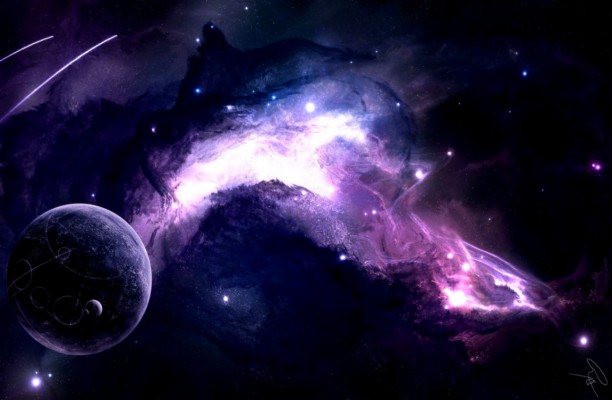

Hulsker thought a landscape on the reverse (F1541r) was also a study for the painting. Pickvance thought F1541v was done later, and the steeple more Dutch than Provençal, a conflation of several Van Gogh had painted and drawn in his Nuenen period, and thus the first of his " reminisces of the North" he was to paint and draw early the following year. (For other interpretations of the Moon, see below.) The one pictorial element that was definitely not visible from Van Gogh's cell is the village, which is based on a sketch (F1541v) made from a hillside above the village of Saint-Rémy. The Moon is stylized, as astronomical records indicate that it actually was waning gibbous at the time Van Gogh painted the picture, and even if the phase of the Moon had been its waning crescent at the time, Van Gogh's Moon would not have been astronomically correct. So the brightest "star" in the painting, just to the viewer's right of the cypress tree, is actually Venus. Researchers have determined that Venus (sometimes referred to as the "morning star") was indeed visible at dawn in Provence in the spring of 1889, and was at that time nearly as bright as possible. In early June, Vincent wrote to Theo, "This morning I saw the countryside from my window a long time before sunrise with nothing but the morning star, which looked very big".
Galaxy shooting star wallpaper series#
The Starry Night is the only nocturne in the series of views from his bedroom window. Two days later, Vincent wrote to Theo stating that he had painted "a starry sky". F1548 Wheatfield, Saint-Rémy de Provence, now in New York, is a study for it. This is F719 Green Wheat Field with Cypress, now in Prague, and the first painting at the asylum he definitely painted en plein air. Van Gogh described the second of the two landscapes he mentions he was working on, in a letter to his sister Wil on 16 June 1889. In his 9 June letter describing it, he mentions he had been working outside for a few days. It is unclear whether the painting was made in his studio or outside. Van Gogh made a number of sketches for the painting, of which F1547 The Enclosed Wheatfield After a Storm is typical. One of the first paintings of the view was F611 Mountainous Landscape Behind Saint-Rémy, now in Copenhagen. Van Gogh exaggerated their size in six of these paintings, most notably in F717 Wheat Field with Cypresses and The Starry Night, bringing the trees closer to the picture plane. In fifteen of the twenty-one versions, cypress trees are visible beyond the far wall enclosing the wheat field. The pictorial element uniting all of these paintings is the diagonal line coming in from the right depicting the low rolling hills of the Alpilles mountains. While the hospital staff did not allow Van Gogh to paint in his bedroom, he was able there to make sketches in ink or charcoal on paper eventually, he would base newer variations on previous versions. Van Gogh depicted the view at different times of the day and under various weather conditions, such as the sunrise, moonrise, sunshine-filled days, overcast days, windy days, and one day with rain. above which, in the morning, I watch the sun rise in all its glory." "Through the iron-barred window," he wrote to his brother, Theo, around, "I can see an enclosed square of wheat. The view has been identified as the one from his bedroom window, facing east, a view which Van Gogh painted variations of no fewer than twenty-one times, including The Starry Night. The painting Īlthough The Starry Night was painted during the day in Van Gogh's ground-floor studio, it would be inaccurate to state that the picture was painted from memory. The Starry Night was painted mid-June by around 18 June, the date he wrote to his brother Theo to say he had a new study of a starry sky. Paul Getty Museum, and the blue self-portrait from September, 1889, in the Musée d'Orsay. During this period, he produced some of the best-known works of his career, including the Irises from May 1889, now in the J. ĭuring the year Van Gogh stayed at the asylum in Saint-Rémy-de-Provence, the prolific output of paintings he had begun in Arles continued.
Galaxy shooting star wallpaper full#
Housed in a former monastery, Saint-Paul-de-Mausole catered to the wealthy and was less than half full when Van Gogh arrived, allowing him to occupy not only a second-story bedroom but also a ground-floor room for use as a painting studio.

In the aftermath of the 23 December 1888 breakdown that resulted in the self-mutilation of his left ear, Van Gogh voluntarily admitted himself to the Saint-Paul-de-Mausole lunatic asylum on.


 0 kommentar(er)
0 kommentar(er)
